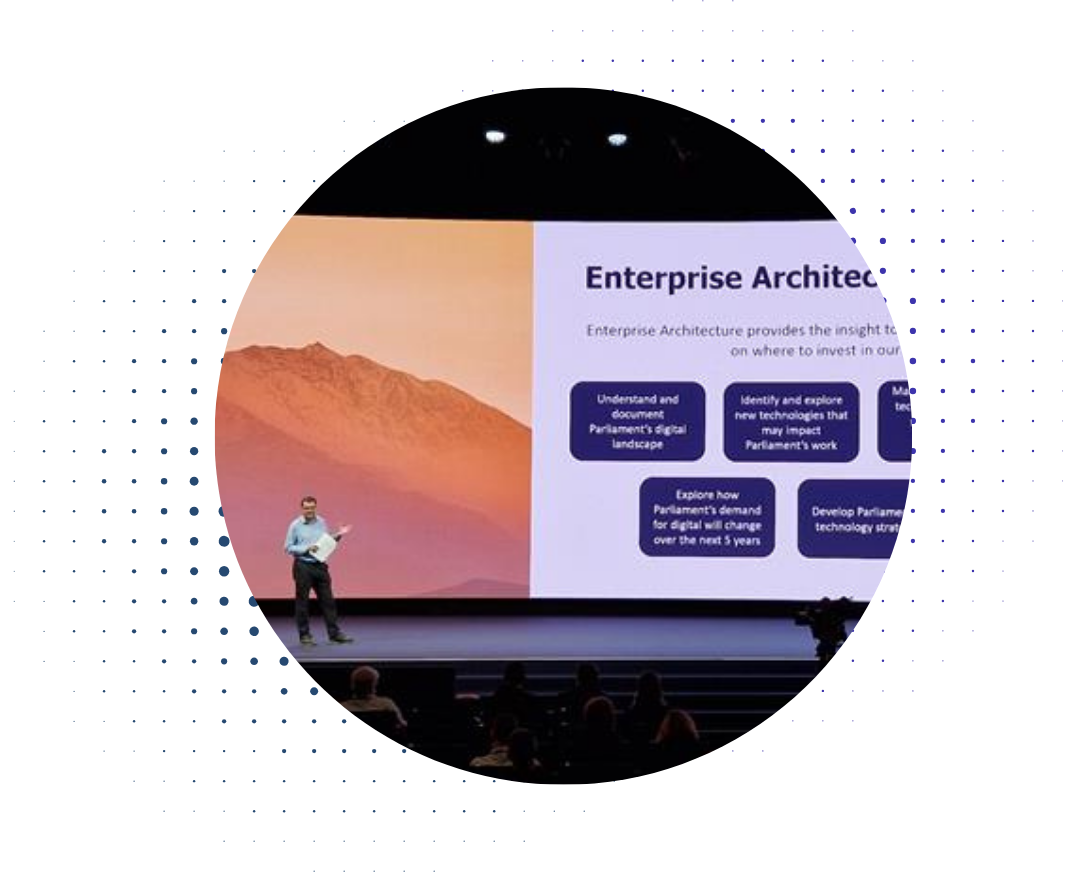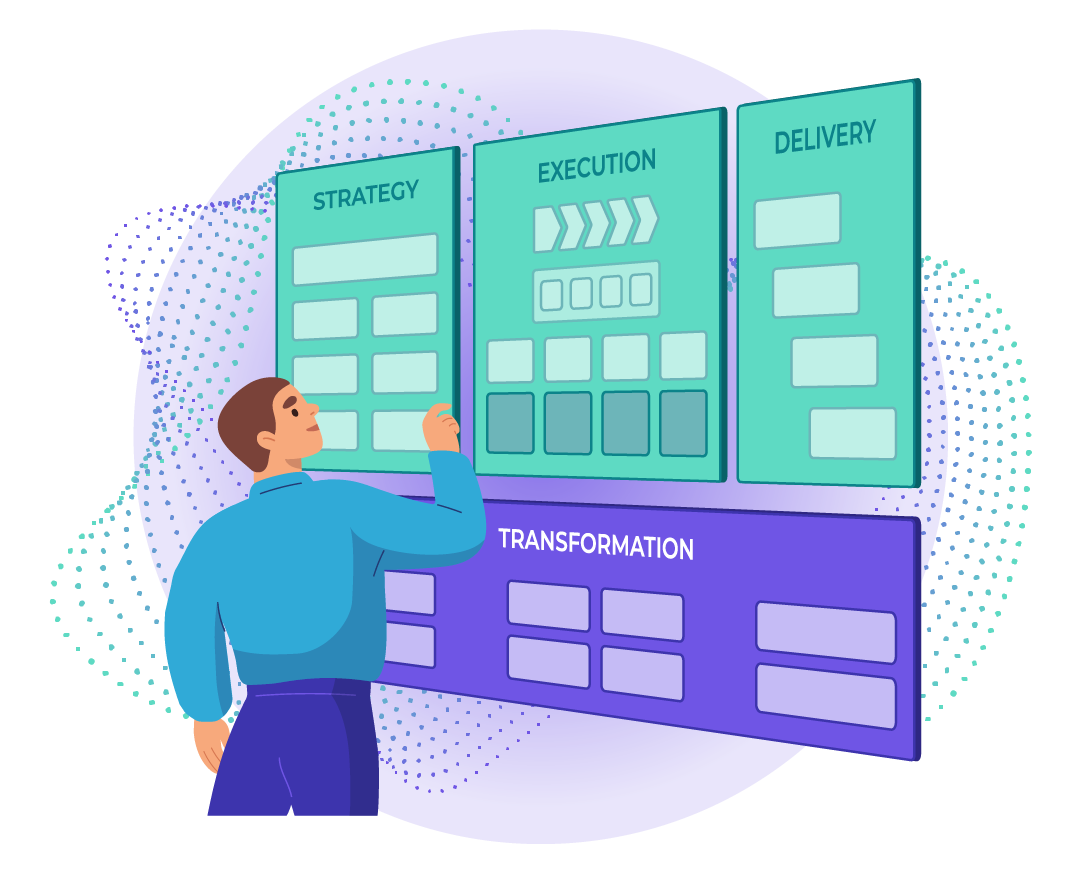As digital transformation accelerates, organizations are under increasing pressure to maintain data integrity, security, and governance while simultaneously evolving their IT landscapes. Poorly managed change processes can lead to data inconsistencies, version control issues, and compliance risks – particularly in heavily regulated industries such as finance, healthcare, and government.
According to a recent study by Gartner, 80% of organizations struggle to maintain accurate, reliable, and consistent enterprise data due to fragmented change management processes. Without structured environments for experimentation and iteration, businesses risk operational inefficiencies, security vulnerabilities, and costly rework when implementing changes.
This is where Workspaces in OrbusInfinity come into play, offering a secure, isolated environment for enterprise and solutions architects to refine and test architectural changes without compromising live repository data.
Introducing Workspaces in OrbusInfinity
Workspaces in OrbusInfinity empowers architects with a dedicated, walled-off space to develop, experiment, and validate models before merging approved changes into the live environment. Unlike traditional methods of working directly within the main repository – where unintended modifications can lead to governance issues – Workspaces ensure that changes are fully controlled, risk-free, and aligned with business objectives.
Key capabilities of Workspaces include:
- Secure, isolated environments for model experimentation and refinement
- Collaborative workflows that allow teams to work together without interfering with live data
- Seamless version control to track iterations and maintain architectural integrity
- Approval-based merging to ensure only vetted changes are integrated into the main repository
By enabling risk-free experimentation and flexible governance workflows, Workspaces enhances operational resilience and safeguards the integrity of IT environments.
How Workspaces improves data security and governance
1. Preventing unintended conflicts during collaboration
In traditional shared repositories, multiple architects working on overlapping areas can unintentionally alter each other’s work, leading to costly errors and rework.
✅ Solution with Workspaces: Teams or individuals can work in secure, isolated environments, eliminating the risk of unintended changes. This protects architectural integrity and enables seamless, error-free collaboration across complex projects.
2. Streamlining version control
Without a structured workspace, multiple drafts and experimental changes clutter the live repository, making it difficult to track progress and ensure consistency.
✅ Solution with Workspaces: Create dedicated environments for each project, keeping drafts, versions, and iterations contained. This eliminates repository clutter, enhances workflow efficiency, and ensures clarity across project phases.
3. Safe design and experimentation
When architectural changes are tested in live repositories, even minor alterations can disrupt critical dependencies, creating data inconsistencies and governance risks.
✅ Solution with Workspaces: Architects can design and test solutions in a controlled sandbox environment, iterating freely without impacting live data. Once changes are validated, they can be merged confidently, reducing errors and maintaining data hygiene.
4. Ensuring a rollback safety net
Many architectural changes involve trial and error, but without a rollback mechanism, teams may struggle to revert to stable versions if an experimental approach fails.
✅ Solution with Workspaces: Workspaces acts as a safety net, allowing architects to revert to stable versions if needed. This removes pressure to achieve perfection on the first attempt and mitigates the risk of failed implementations.
5. Improving stakeholder collaboration
Stakeholder feedback is crucial in enterprise architecture, but when iterations take place directly in the live repository, miscommunications and delays can occur.
✅ Solution with Workspaces: Architects can refine solutions in a controlled environment, ensuring that stakeholder input is incorporated effectively before finalizing changes. This enhances agility and decision-making while preserving data security.
Why Workspaces matters
Organizations are operating under increasingly stringent compliance and governance requirements, and for good reason.
Strong data security and governance not only protect businesses’ and individuals’ sensitive information but also build trust, ensure business continuity, and prevent costly breaches, making it essential despite the effort required. However, any errors in enterprise architecture models can introduce security vulnerabilities, operational inefficiencies, and regulatory risks.
By providing a structured, secure, and controlled environment for architectural changes, Workspaces in OrbusInfinity helps organizations to:
- Maintain data governance best practices
- Reduce the risk of compliance violations
- Enhance operational resilience
- Improve auditability of architectural decisions
Interested to find out more about Workspaces in OrbusInfinity? Read the full announcement or request a demo of OrbusInfinity today.




.png)


